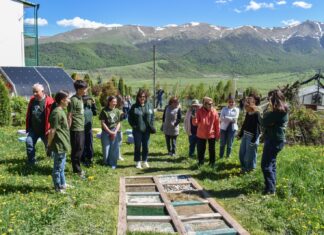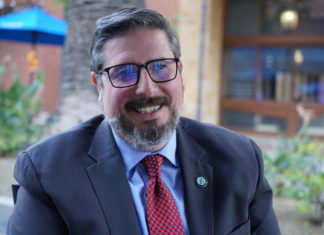By Aram Arkun
Mirror-Spectator Staff
ENGLEWOOD, N.J. — Dr. Dennis Papazian’s election to an initial one-year term as Avak Sbarabed, or Grand Commander, of the Knights of Vartan, at the organization’s Grand Convocation on July 10, provided an opportune occasion to discuss the work of the Knights, as well as Papazian’s ideas and goals. Hagop Vartivarian participated in the discussion here on July 20 in his capacity as Armenian Democratic Liberal party (ADL) press chairman.
Papazian, born in Augusta, Ga., has been a member of the Knights for 40 years, serving in nearly every office as he moved up in the ranks. Reminiscing, he said, “The Knights of Vartan in those days was the Armenian establishment. All the greats were Knights: [Dadour] Dadourian, [Alex] Manoogian, [Dikran] Boyajian, [Dr. Hovhannes] Zovigian [a Ramgavar leader from Boston], etc. In those days, you had to be tapped; you had to be invited. So I waited. And exactly 40 years ago it happened.”
In addition to working for several decades as a history professor at the University of Michigan’s Dearborn campus, Papazian founded and directed the Knights of Vartan Armenian Research Center on that same campus. He retired in 2005 and moved to Woodcliff Lake, NJ. Papazian has held prominent positions in a number of other Armenian organizations, and over the years has published dozens of articles and book reviews. He has appeared as a commentator on television and radio.
The Knights of Vartan was founded in 1916 in Philadelphia during the Armenian Genocide. Other major centers of the organization initially were in New England and New York. A fraternal organization modeled after the Freemasons, its goals according to its website are “to champion the Armenian cause, to alleviate the suffering of the Armenian people, to ensure the safety of displaced Armenians … and to train leaders to serve the religious, cultural, educational and charitable needs of the Armenian people.”
Since its founding, some aspects of its operations and rituals have always been kept off-limits to non-members. Papazian explained that “the ideas of secrecy, rituals, degrees and discipline were vitally important in those days. Secrecy would preserve the Armenians from Turks and other adversaries.”







